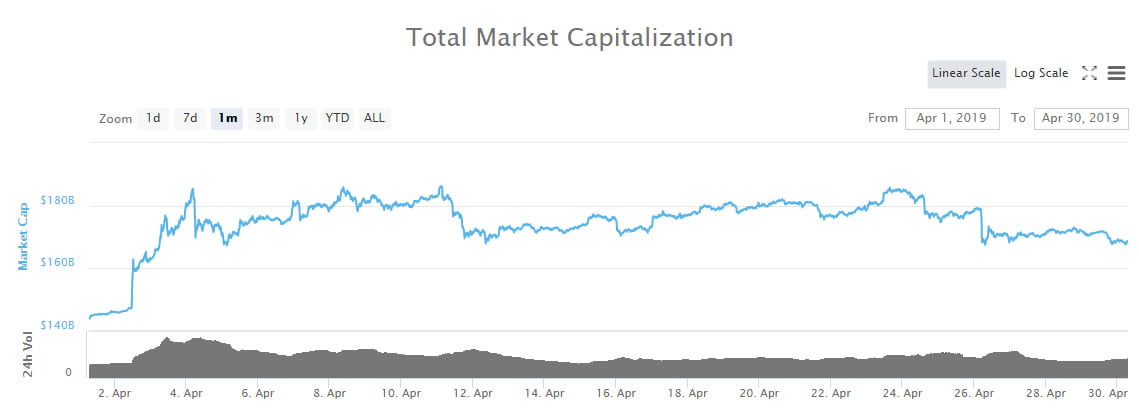
2024-4-24 16:56 |
My buddy Harry Sudock has a wager with Danny Knowles of What Bitcoin Did fame about the prospect of a 50 BTC block reward in this new epoch. Putting aside a couple of fat fingers, the last time this happened was over 4000 days ago.
Late last Friday night, his bet almost hit on the very first halving block, a 40.751 BTC stunner.
Ironically, miners were the big winners at this turn of the epoch, netting just over 100 million dollars in total revenue on the day — almost five times the previous all-time high.
The days around the halving, visualized as block fee rates.https://t.co/FP3PfGHAiB pic.twitter.com/xcS22GPw79
— softsimon (@softsimon_) April 21, 2024Beyond the numbers, this time felt different. While the halving is usually a reminder of Bitcoin’s reliability, this year’s event was anything but predictable. On and off-chain, significant narratives converged and culminated in an unprecedented climax. I wasn’t there for the first halving but the previous two events seemed inconsequential. Somehow, block 840,000 felt like it ushered in a new era.
Culturally, Bitcoin appears to be closing in on escape velocity. Four years ago, you would’ve been hard-pressed to find a Bitcoiner who did not rally under the maximalism flag. Hot off the heels of the blocksize war and a brutal bear market, orthodoxy reigned supreme.
Today, the landscape is unrecognizable. Piety is openly mocked and most of the high priests have been exiled. Apostasy is trending. We’ve broken out of the insular mold — everyone is a Bitcoiner.
Money for enemiesOf course, with the dominant cultural institution having fallen, the barbarians are at the door. The holy blockchain is being pillaged and no Bitcoin node is safe. At the risk of using yet another analogy, it’s a true Berlin Wall moment. Speculative mercenaries have crossed over and they’re finding the place pretty comfy. Ordinals, BRC20s, Runes. It’s a degen world and we're all living in it.
As expected, this defacing of Bitcoin’s sanctity isn’t sitting well with the old guard. They have been busy denouncing this behavior, adamant that heretics should be filtered ostracized. “Bitcoin must not be associated with scams.” Thumping their bible, they have seemingly little regard for the permissionless ideals of the system. Sinners should repent or burn in hell. Their culture must prevail, lest Bitcoin has failed.
Not since the Silk Road has a Bitcoin use case been so widely controversial. Blasphemous, I know, but hardly surprising. The free market has a way of exposing the hypocrisy of its most ardent proponents.
I empathize with the idea that this rampant speculation is damaging for most of its participants. Fiat has thrown the average person’s financial incentives so out of whack that gambling is now perceived as EV+. Memecoins are Gen Z’s lottery tickets and Bitcoin memecoins are the new meta.
If you’ve dedicated your life to freedom money in the hope of distancing yourself and your loved ones from this exact behavior, it’s pretty depressing to see it rear its ugly head on your turf. Indeed, those who seek to create value should hate nothing more than to see others throw it down the drain. On the other hand, Bitcoin makes no such moral or ethical judgment. Salvation isn’t promised or expected from anyone who adopts it. It is both for the best of us, and the worst.
The halving also put a spotlight on Bitcoin’s awkward technological state. Unless you were among the privileged few with existing Lightning liquidity, Bitcoin was practically unusable as a payment method over the weekend. You can imagine the dunk fest on Twitter when it was suggested LN nodes disable routing to avoid costly force closures.
I won’t pretend there is an easy way out of this predicament. Sure, we can bury our heads in the sand and pretend the current activity is unsustainable. We can circlejerk about UTXO and channel management.
Another option is to meet users where they are. Drop the ideological arrogance and accept that certain tradeoffs are acceptable, if not necessary, to build a global and reliable payment system. It’s a tough pill to swallow but trust-based alternatives are both viable and, for all intents and purposes, probably superior to the gymnastics currently required by “trustless” alternatives.
This is why I choose to remain optimistic about the road ahead. The progress around ecash mints is awe-inspiring if you ask me. It allows us to leverage Lightning’s strength while addressing the last-mile problem that has plagued it. It opens up a world of possibilities for builders to improve on existing custodial solutions and get them out of the silos they currently operate in.
Meanwhile, we can continue working on more ambitious proposals and attempt to reduce or remove trust assumptions. Bitcoin’s properties shouldn’t be easily conceded for the sake of mass adoption. That said, the devil is in the details and complexity often comes at the expense of user experience. Not all payments are the same and most probably shouldn’t be burdened with the cost of on-chain censorship resistance.
At least from a technical perspective, this is no Bitcoin renaissance. It’s more of a case of everything old is new again.
From Satoshi Dice to Magic Eden.
From Counterparty to Runes.
From Digicash to Fedimints.
We’ve seen this story before except this time IS different.
This time we have to foot the bill for our success and the hubris that came with it.
We can’t afford to be cute anymore. This time we’re going to have to do even better.
BigONE Token (BIG) íà Currencies.ru
|
|


























